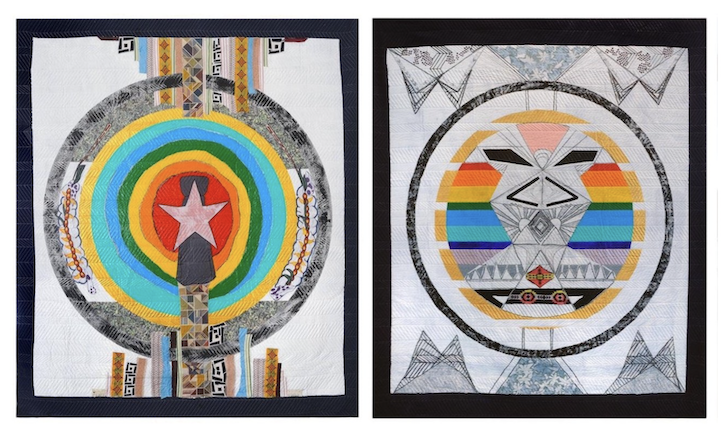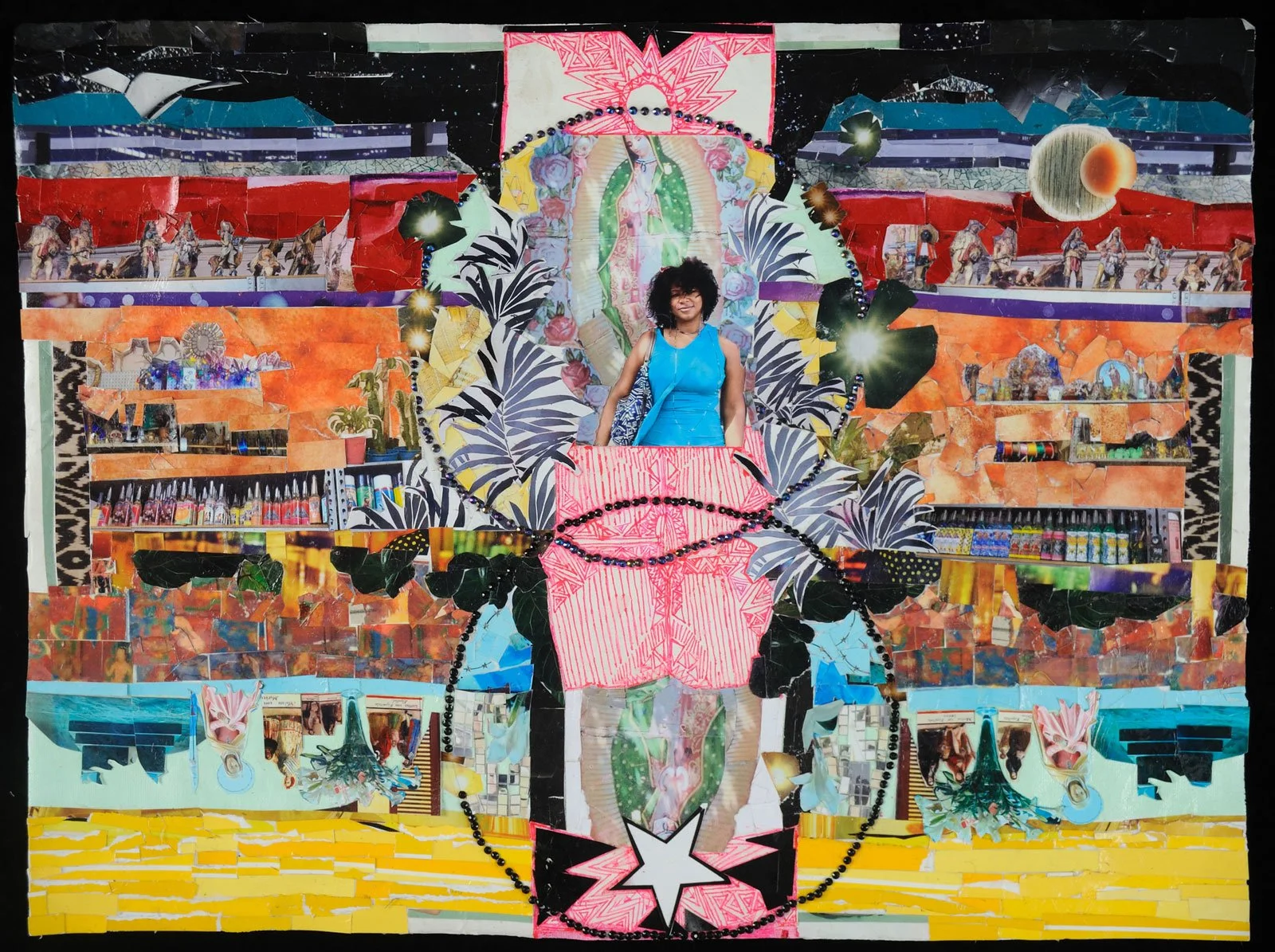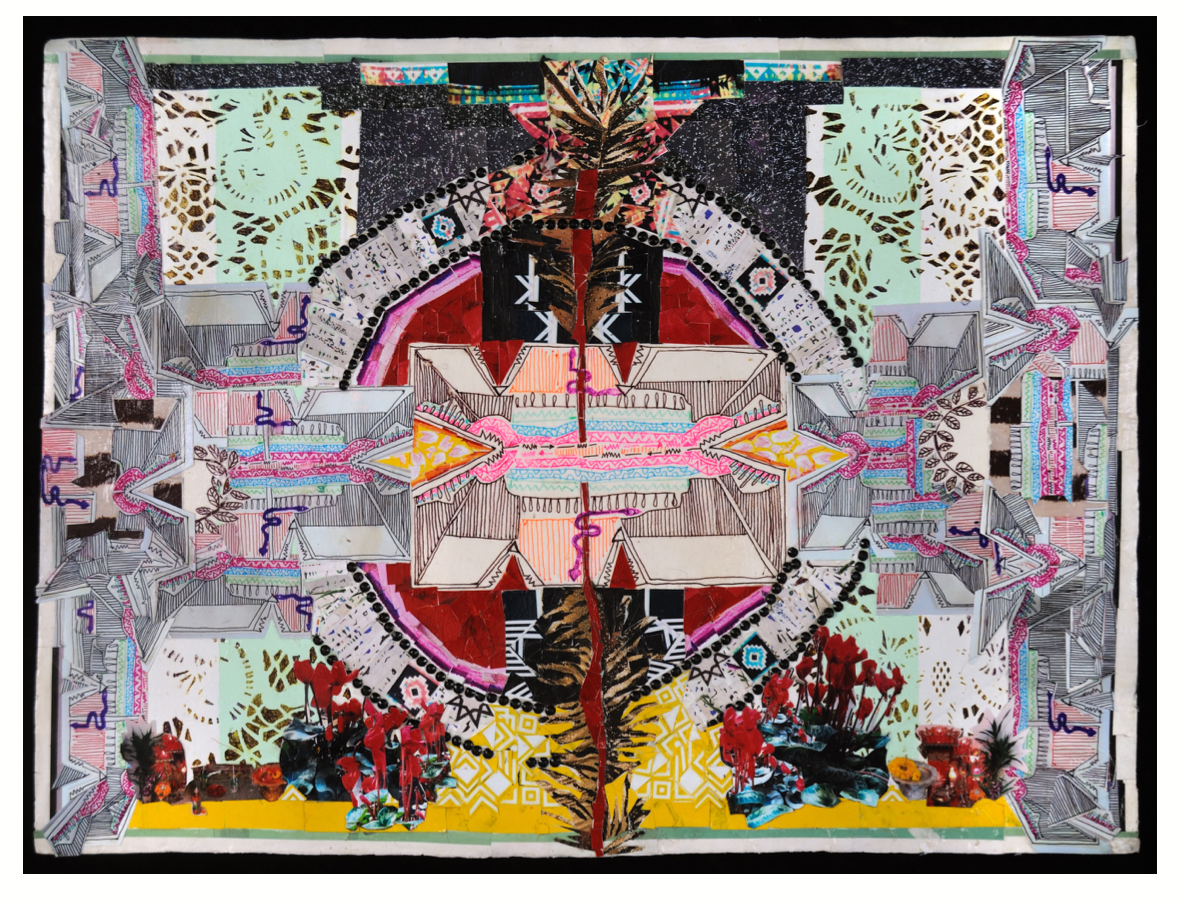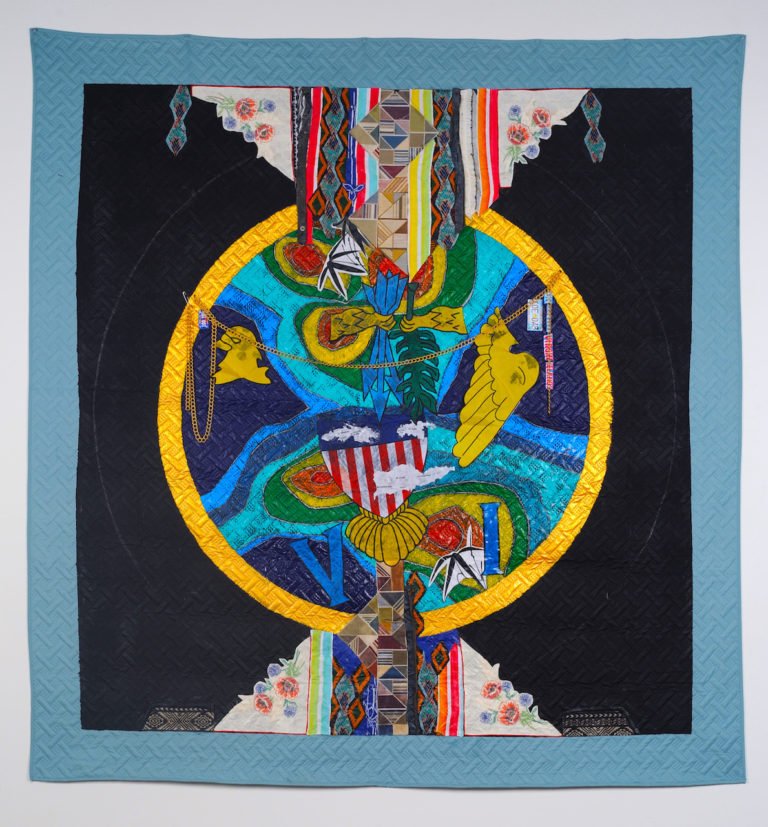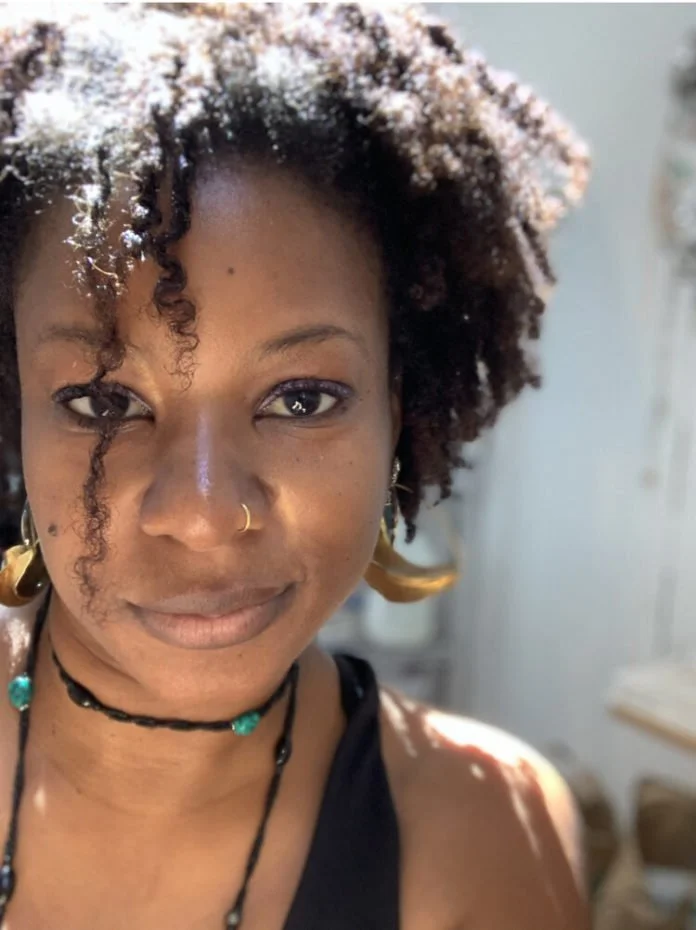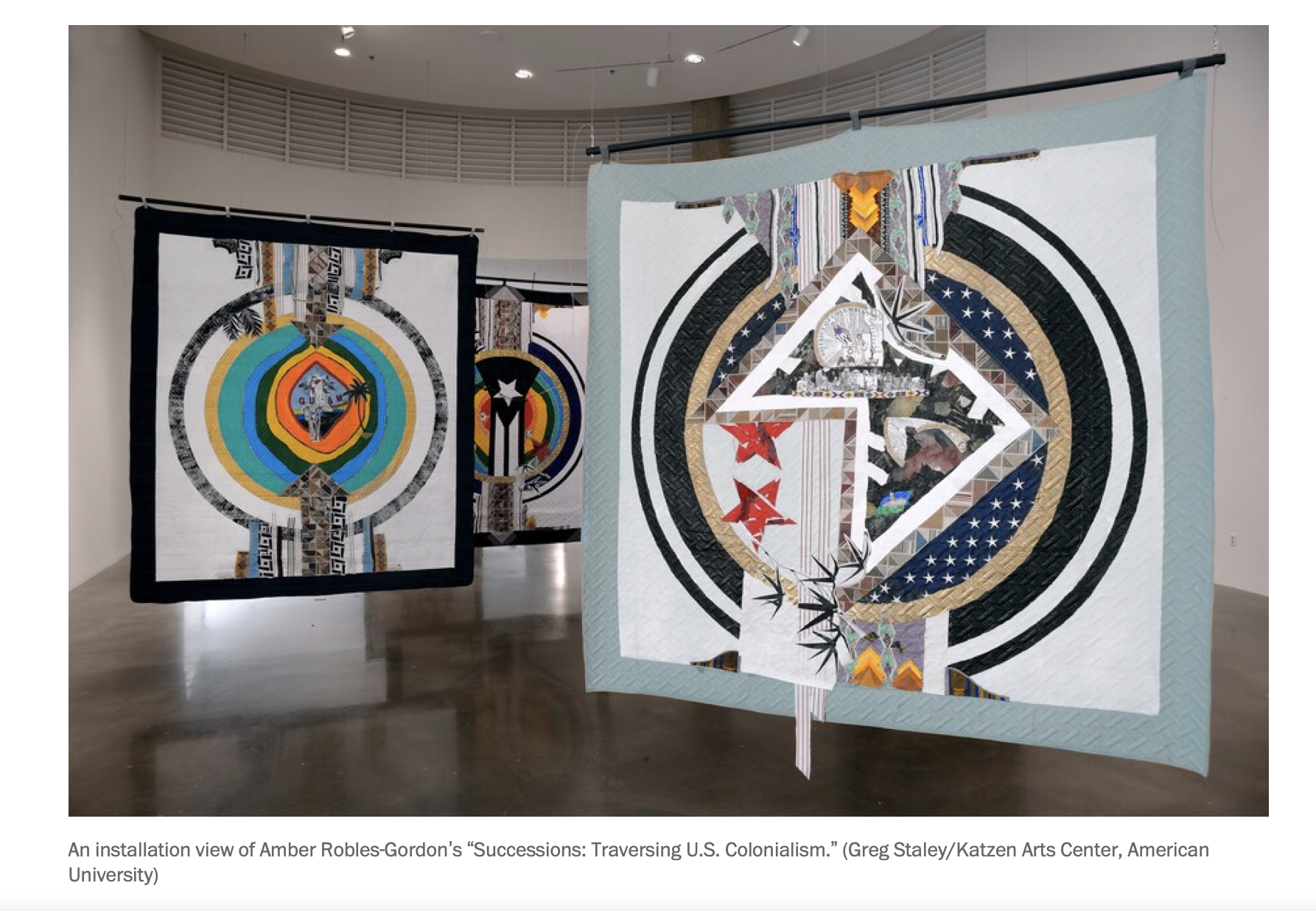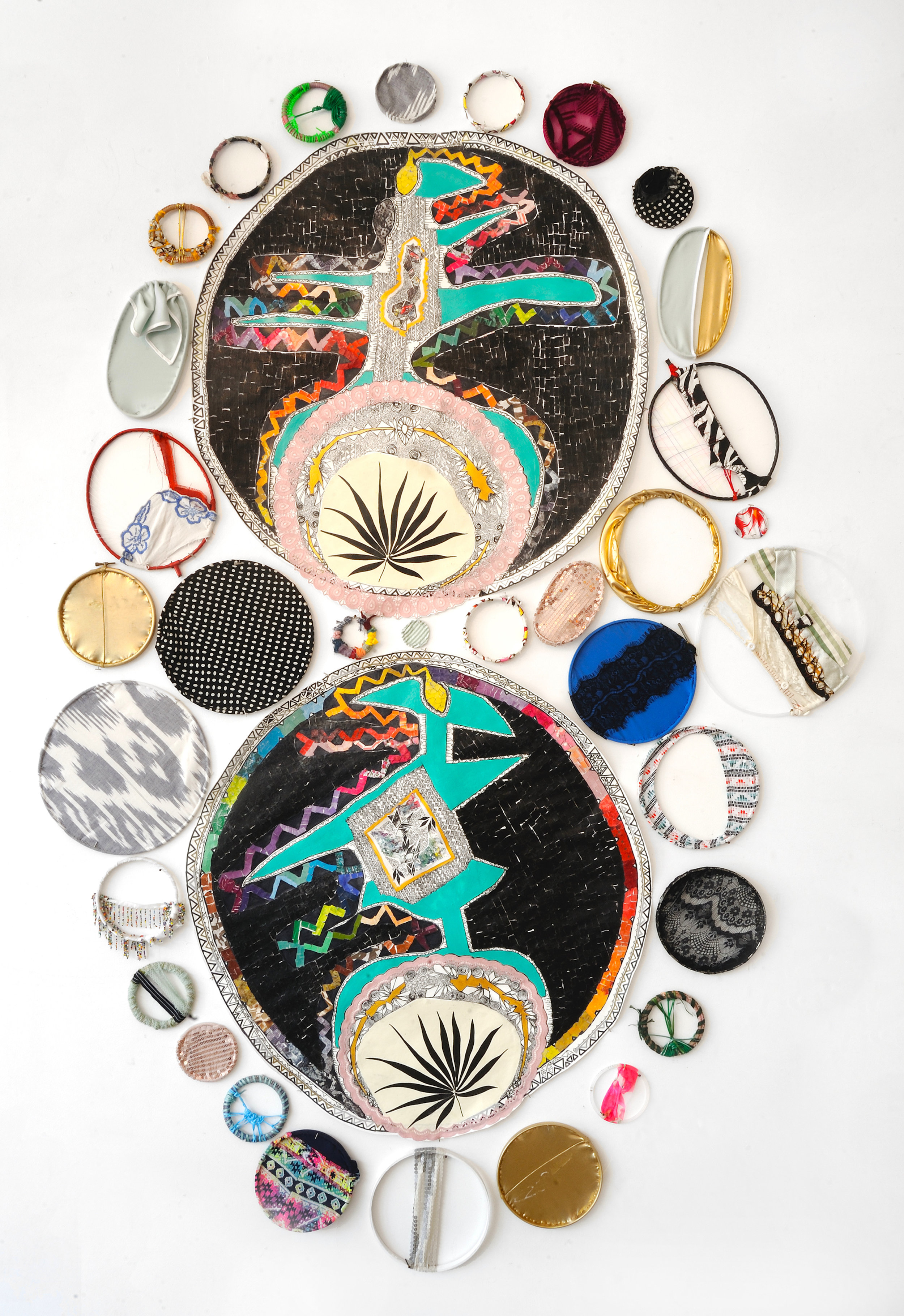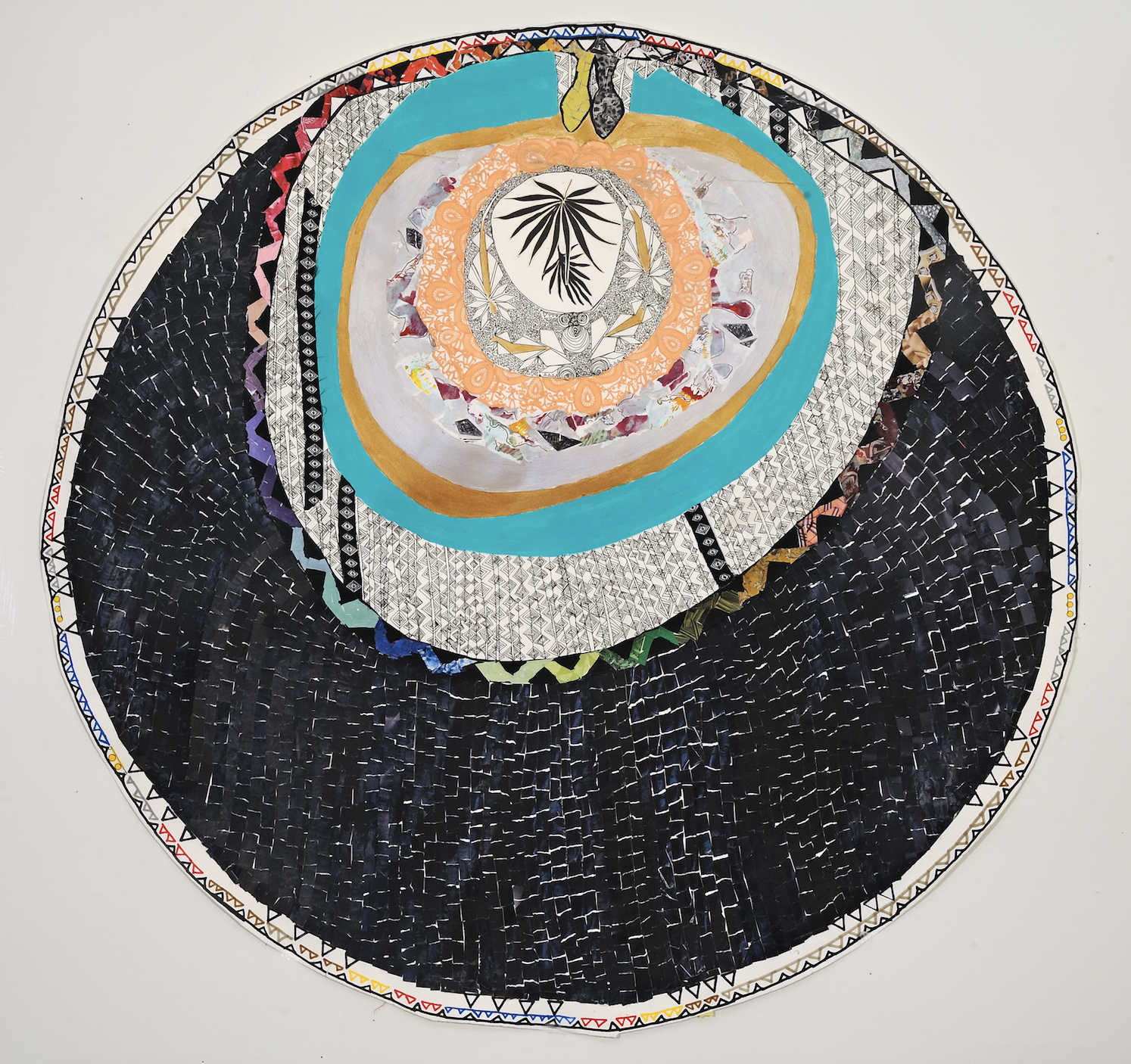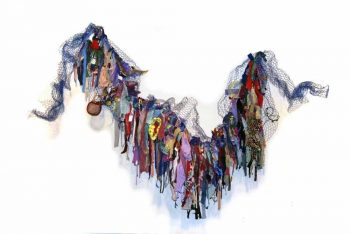Between the two galleries housed in the Anacostia Arts Center and the Honfleur Gallery on Good Hope Road, there’s no shortage of art that conveys the level of talent that lies East of the River in Wards 7 and 8.
he 11th annual East of the River Exhibition at the Honfleur Gallery features three female artists who have their own distinct styles and inspirations, but the pieces on view have a strong affinity between them and come from similar creative places. Each artist makes an individual statement about spirituality, identity and the repetition of forms and textures, but together they create a continuum.
Asha Elena Casey, Sheila Crider and Amber Robles-Gordon’s work meld together in this annual exhibition as if they were created to be contained in one space. Both Crider and Robles-Gordon work in mixed media, employing the use of fabric, jewelry, photographs and other materials that fold into their works, conveying traditions, personal statements and statements on race and inclusion.
Crider, who received multiple Small Project Grants from the D.C. Commission on the Arts and Humanities, is a familiar fixture in the arts scene in Anacostia, having recently created a public art project at the new St. Elizabeths. Her work at Honfleur stems from a project that she intended to result in quilting. Instead, her “Paducah Residency Project” made use of the quilt batting in a unique way with braided lengths of fabric representing humanity, interconnectedness, binding and chains.
Similarly, Robles-Gordon’s “Let Me Tell You About the Baes and the Bees” series, which usually employs found objects, relates to Crider’s work in the repetition of chains, although Robles-Gordon uses jewelry and strands of pearls to create the same verticality of mixed textures.
Casey, the most junior of the three women, uses the repetition of a central image in “Petra in White” and “Petra in Black,” layering on deep and varied textures around the face of a black woman.
hile the exhibition creates a rhythm that draws on related elements of the three artists’ works, next door at the Anacostia Arts Center’s Blank Space Gallery, the inaugural DC Artist East Exhibition is an eclectic amalgam of different media and approaches by more than a dozen artists who live East of the River, some familiar to exhibits there and around the city, and others who are exhibiting for the first time. The artists included in this exhibit are members of an online community of creators living and working East of the River.
emy Aqui, a photographer who has lived in Anacostia for the past four years, is showing his enhanced photography for the first time at the center. He joins more familiar names such as photographers Jonathan French and Bruce McNeil and mixed media artists Jay Coleman and Malik Lloyd in this expansive show, which takes up every bit of wall space in the broad, light-filled lobby and hallways.
fter fellow artists encouraged him to show his work, Aqui entered two of his photographs into the exhibit which were selected by Anacostia Arts Center’s creative director.
ne of his photos, “Townhouse in NW,” shows a very different view of what might normally be an everyday part of Washington’s landscape. The multi-textured house has a large banana tree in the front, and, according to Aqui, is reminiscent of a tradition in his former home of San Francisco, “where a new homeowner is accepted into their neighborhood by having a tree presented to the new neighbor as a welcoming gesture.”
”I attempt to turn photos of mine into colorful imagery of work [such as old postcards] depicting a fading neighborhood landscape,” he said, describing the surreal façade of the house’s bright, tropical colors.
third exhibit by photographer Vincent Brown looks at the plight of the homeless in D.C., taken with his iPhone, titled “City Under Siege” in the Vivid Solutions Gallery. Although he had intended his work to be focused on other aspects of life in Washington, Brown was taken aback at the prevalence of homeless people on the streets, which then demanded his focus.
art of the annual art exhibits at this stretch of Good Hope Road also includes the bestowing of the annual East of the River Distinguished Artist Award. In 2012, the East of the River Distinguished Artist Award was created to celebrate the exemplary caliber of artists from Ward 7 and 8. This year, the award went to James Terrell for his brightly colored abstract paintings included in the exhibit in the Blank Space Gallery.
Is acrylic painting “Kind of Blue” was inspired by jazz trumpeter Miles Davis and the song it is named for. The East of the River Artist Award provides prize money for the artist to use to further their creative career.
ll three exhibitions are on display until Aug. 5 at the Honfleur Gallery at 1241 Good Hope Road SE and the Anacostia Arts Center at 1231 Good Hope Road SE.
For more information, visit www.archdc.org or call 202-631-6291.

